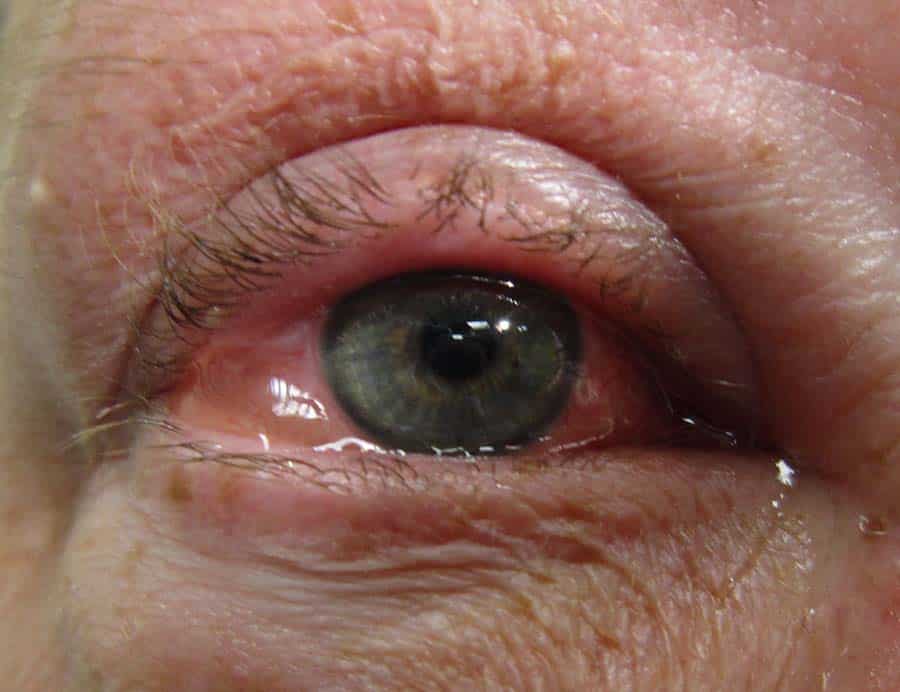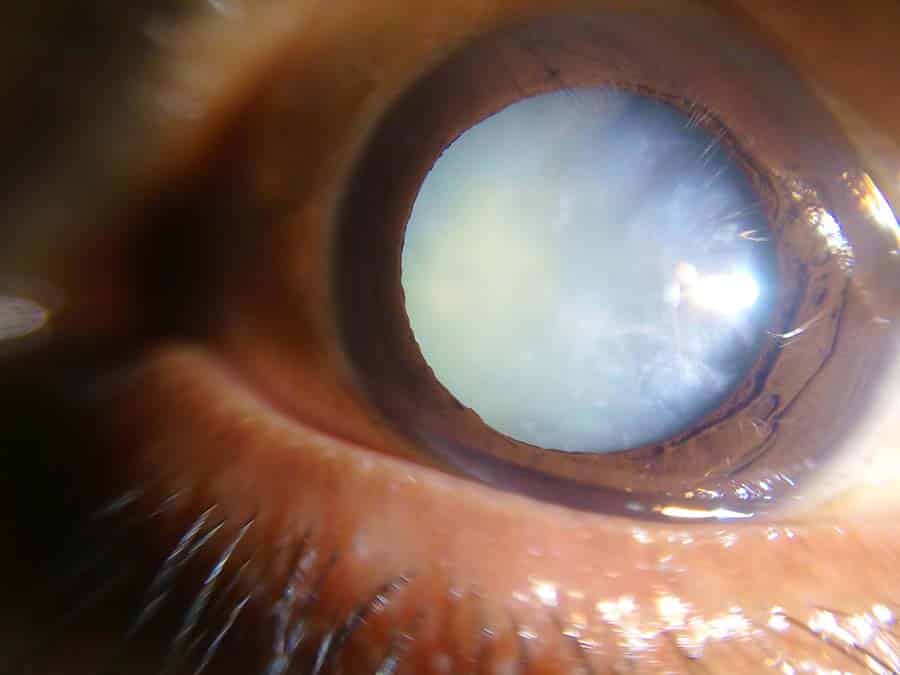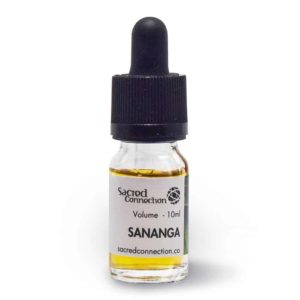Treating Eye Conditions With Sananga Eye Drops

Sananga is the name given to medicinal eye drops used by some indigenous Amazonian peoples, most notably the Matsés, Ticuna, Huni Kuin, and Yawanawá tribes.
Taking sananga can feel like an intense stinging pain that seeps into your whole body – but leaves you feeling energized, cleansed, and sharpened.
Traditionally it is used to improve visual perception and cleanse the body of negative spiritual energies, but it is also used in the Amazon to treat eye conditions and maladies.
Here we’ll look at the evidence that sananga could treat eye conditions, and which ones it could potentially be most useful for.
What is Sananga?
Although medicinal eye drops made from a variety of plants are common throughout the Amazon, sananga usually refers to eye drops made from the Tabernaemontana sananho plant. While eye drops made from Tabernaemontana undulata are also sometimes called ‘sananga,’ these are more commonly known as ‘becchete’ by the Matsés and ‘mana heins’ by the Huni Kuin. However both sananga and becchete are made from plants in a very similar family, and have very similar effects.
You can purchase sananga from the Yawanawa tribe here.
Sananga eye drops are used traditionally in the Amazon to sharpen vision, remove negative spiritual energies, and even as a precursor to ayahuasca ceremonies. They’re also used to treat a wide range of eye conditions, and even pains associated with the eyes like headaches.
Evidence that Sananga Can Treat Eye Conditions
Sananga allows its users to access the medicinal and spiritual powers of the Tabernaemontana plants, which are thought to treat a number of physical and mental issues. The plant spirit of sananga is thought to help to eliminate negative or melancholic energies (sometimes known as panema) from the body.
Traditionally, you can tell that the power of the sananga is entering your body by the intense pain that it can cause. The pain of the experience is crucial – it indicates that the soul of the plant is being absorbed by the body, starting at the eyes, before working itself deep into the veins and viscera (Shepard, 1999, p.102).
But is there any scientific evidence that the painful stinging of sananga eye drops could treat specific eye conditions?
The important disclaimer here is that with any eye condition, you must consult with your healthcare provider before making any treatment decisions. Sananga may not be a good replacement for, or even addition to, other treatments. Don’t risk losing your vision just because you didn’t want to check with your doctor!
Traditionally, sananga is used to treat conjunctivitis, cataracts, eye pain and even headaches (Shepard, 1999, p.135). Unfortunately, scientific studies on the two species of plants most commonly used in sananga (T. undulata and T. sananho) are very sparse – however, there have been a handful of studies on plants within the Tabernaemontana genus, which may possess similar characteristics.
So take all of the following evidence with a pinch of salt – because we can’t be sure that the most common sananga ingredients T. undulata and T. sananho are exactly the same as the plants that have actually been studied…
Sananga for Conjunctivitis and Eye Infections
Eye infections (either viral, bacterial, or fungal) can cause swelling, redness, and pain. Conjunctivitis (also called pink eye) is the inflammation of the eye or eyelids, and is commonly caused by infections.

There is some evidence to suggest that sananga could help to combat eye infections. One study showed that T. alternifolia extract could slow the growth of three out of five different species of bacteria, although it did not affect the growth of P. aeruginosa, which is a common cause of eye infections (Shrikanth et al, 2014). One other study also looked at the same species, T. alternifolia, and found it could inhibit the growth of S. aureus bacteria (Marathe et al, 2013).
Another study showed that T. stapfiana extract could slow down the growth of four common kinds of fungus, and even kill them (Ruttoh et al, 2009). T. pachysiphon extract can kill several kinds of bacteria, including E. coli (Van Beek et al, 1984), and T. angulata extract can kill S. aureus bacteria (Suffredini et al, 2002). Finally, T. heyneana extract has been shown to strongly reduce the growth of 3/7 bacteria tested, and 3/7 different kinds of fungi (Sathishkumar et al, 2012).
So although on the surface it looks like several species within the Tabernaemontana genus can kill some bacteria and fungi, there are two important caveats to keep in mind:
- We don’t know if the two sananga species act in the same way as the above Tabernaemontana species that have been shown to have antimicrobial and antifungal properties.
- We don’t know what concentrations of sananga would be effective at treating an eye infection.
So don’t go throwing sananga in your eyes expecting it to completely eradicate an eye infection! As always, make sure you check with your healthcare provider to be safe.
Sananga for Cataracts
Cataracts are the world’s leading cause for blindness. In cataracts, proteins in the lens of the eye clump together to form a filmy layer, which makes it harder to focus and can eventually lead to vision loss.
Cataracts are caused by a number of things, including natural ageing and genetics. But it’s also likely that one important risk factor is inflammation.

There is quite a lot of evidence that plants in the Tabernaemontana genus can reduce inflammation:
Three studies have examined the capacity of plant extracts to reduce inflammation in a paw injury in mice: with T. coronaria, T. pandacaqui and even the sananga plant itself T. sananho. Injecting these plant extracts (at concentrations of 0.1, 0.25 and 1g/kg, respectively) into the paws of mice, before their paws were injured, reduced the inflammation by about half (Thambi et al, 2006; Taesotikul et al, 2003; de las Heras et al, 1998).
Two other studies have shown that Tabernaemontana plant extracts (T. catharinensis and T. divaricata) can reduce the activity of certain inflammatory enzymes in biochemical experiments (Nicola et al, 2013; Rumzhum et al, 2012). Also, extracts of T.catharinensis, T.divaricata and T.alternifolia have been shown to have some antioxidant properties in laboratory conditions – something that is important in promoting healthy tissues and reducing inflammation (Nicola et al, 2013; Rumzhum et al, 2012; Shrikanth et al, 2014).
So overall it’s reasonable to suggest that the Tabernaemontana plants have the capacity to reduce inflammation. But as always, there are some important caveats!
- We don’t know whether these anti-inflammatory properties would still work in humans, as they do in mice or in the laboratory.
- We don’t know if the anti-inflammatory properties would still work in the form of eye drops rather than injections.
- We don’t know how effective sananage eye drops might be in combatting or preventing cataracts.
Keep in mind that for all we know right now, sananga may actually increase the risk of cataracts. There’s not enough evidence to tell for sure one way or the other.
Sananga for Eye Pain
Eye pain can have any number of causes, but traditionally sananga is used as a cure-all for pretty much any kind of eye pain, including headaches (Shepard, 1999, p.135).
As always, make sure to consult your healthcare provider if you have any kind of eye pain. Don’t assume that sananga is all you will need to treat your pain!
However, if your eye pain is caused by inflammation or infection, there’s a chance that sananga could help (as illustrated by the information above!). Just don’t use sananga as the sole treatment for a mysterious eye pain… get it checked out!
Sananga for Glaucoma
Glaucoma is a serious eye condition involving damage to the optic nerve. Currently there is no evidence that the alkaloids in sananga are capable of entering the optic nerve and repairing nerve damage.
If you suffer from glaucoma, check with your healthcare provider before using sananga.
How to Take Sananga Safely
Sananga is not a pleasant medicine to take! As one person says:
“Sananga burns. It does not feel great. And I was quite positive I was going to go blind upon opening my eyes once the medicine had settled the first ceremony I had with it…”
So you should be prepared for sananga to hurt.
To make sure you have a safe and effective sananga experience, purchase your sananga from a reputable retailer like Sacred Snuff.
Sananga will reduce in its potency over time, so keep your sananga in the fridge to preserve its power.
Do not use sananga while you have contact lenses in, and do not put in contact lenses within 24 hours of using sananga.
Although there’s no evidence that sananga is harmful, there is also no solid evidence that its repeated use is healthy. If you have any eye conditions, check with your doctor before using sananga.
Try to avoid using sananga more than once per day. Sometimes people attempt using sananga every day for periods of up to six weeks – but we caution that there is no research regarding the health risks of this, and traditional use typically only involves taking sananga once every few days or weeks.
Here are our tips for a good sananga experience:
- Spend some time preparing your space so you are comfortable and relaxed.
- Perform some breathing exercises to ground yourself in your body.
- Set your intention for the experience, and if it helps, greet the plant medicine you are about to encounter.
- Remove any contact lenses and make sure you have not taken any other eye medication or eye drops, except for saline.
- Remove eye makeup if you are wearing any.
- Prepare a bowl of tap water, or saline eye drops, to wash your eyes in case the sananga is too painful.
- Lay back on a comfortable surface, and prepare your sananga dropper.
- Close your eyes, and drop a single drop of sananga into the corner of each of your closed eyes. If you find this difficult to do with your eyes closed, lean the dropper against the inner curve where your nose meets your eyebrow, and let a drop roll down into the corner of your eye.
- Blink your eyes quickly so the liquid spreads across your eyes evenly, at the same time.
- Breathe through the pain and attempt to encounter it rather than resisting it. The peak of the pain may last for several minutes. Remember, sananga’s power is considered to be partly related to the pain it causes.
- Once the pain has passed, it can be useful to enter into meditation or another mindfulness practice, to become fully aware of the effects the sananga has had on your mind and body.
- Undertake whatever practices you feel the sananga could help with – including visual tasks, exploration with other entheogenic plant medicines, or exercise.
You may have pain lasting a few hours after the experience, and your eyes may look red for the rest of the day. If these symptoms last longer than a day, see your doctor.
If you encounter any long-term irritation, immediately take a break. If you do embark on a long period of sananga use, try to take a few weeks off as often as possible, to give your eyes a break.
Enjoy your exploration with sananga! Keep a journal to log its effects, and try experimenting with its ability to enhance other plant medicines or even your appreciation for your daily routine.
References
De las Heras et al (1998). Antiinflammatory and antioxidant activity of plants used in traditional medicine in Ecuador. Journal of Ethnopharmacology 61, p161-166
Marathe et al (2013). In vitro antibacterial activity of Tabernaemontana alternifolia (Roxb) stem bark aqueous extracts against clinical isolates of methicillin resistant Staphylococcus aureus. Annals of Clinical Microbiology and Antimicrobials 12(26), p1-8
Nicola et al (2013). Chemical Constituents Antioxidant and Anticholinesterasic Activity of Tabernaemontana catharinensis. The Scientific World Journal, DOI:10.1155/2013/519858
Rumzhum et al (2012). Antioxidant and cytotoxic potential of methanol extract of Tabernaemontana divaricata leaves. International Current Pharmaceutical Journal 1(2), p27-31
Ruttoh et al (2009). Antifungal activity of Tabernaemontana stapfiana Britten (Apocynaceae) organic extracts. Pharmacognosy Res 1(6), p387–391
Sathishkumar et al (2012). In vitro antibacterial and antifungal activities of Tabernaemontana heyneana Wall leaves. Journal of Applied Pharmaceutical Science 2(8), p107-111
Shepard (1999). Pharmacognosy and the Senses in Two Amazonian Societies. PhD Thesis, University of California, Berkeley.
Shrikanth et al (2014). Antimicrobial and antioxidant activity of methanolic root extract of tabernaemontana alternifolia. International Journal of Pharmacy and Pharmaceutical Sciences 7(1), p66-69
Suffredini et al (2002). Antibacterial activity of Apocynaceae extracts and MIC of Tabernaemontana angulata stem organic extract. Braz J Pharm Sci 38(1), p89–94
Taesotikul et al (2003). Anti-inflammatory, antipyretic and antinociceptive activities of Tabernaemontana pandacaqui Poir. J Ethnopharmacol 84, p31–35
Thambi et al (2006). Antioxidant and antiinflammatory activities of the flowers of Tabernaemontana coronaria. Indian Journal of Pharmaceutical Sciences 68(3), p352-355
Van Beek et al (1984). Antimicrobially active alkaloids from Tabernaemontana pachysiphon. Phytochemistry 23(8), p1771–1778


Is there another way to take other than via eye. Such as under younger, in tea, etc. ? Similarly for rape’.
Also, has any study looked at macular degeneration.
Thanks,